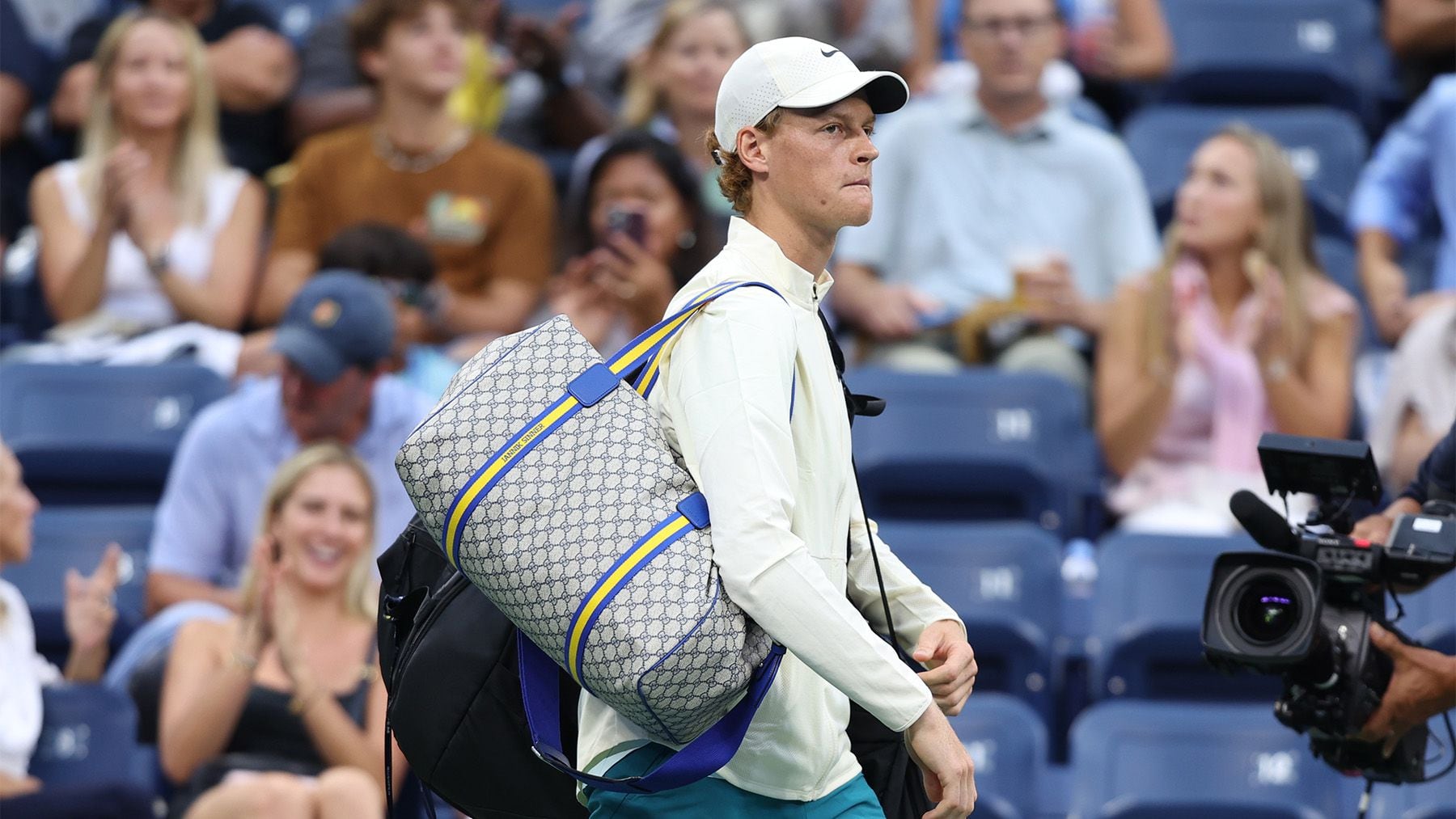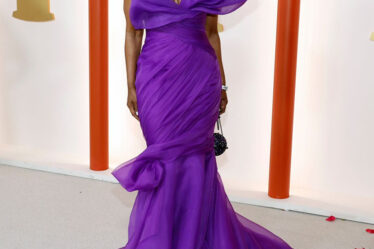
Tashi and Art are fictional characters played by Zendaya and Mike Faist in Luca Guadagnino’s Challengers. In the movie, they promote brands just as their real-life counterparts would. When she’s an up-and-coming junior star, Tashi has an Adidas campaign. When Art becomes a superstar, he wears Uniqlo. An Aston Martin billboard becomes a symbol of the tension and power dynamics in their marriage, which is tested when Patrick (Josh O’Connor)—Art’s old doubles partner and Tashi’s ex-boyfriend—reemerges in their lives.
This is not idle product placement. “My whole notion was—instead of playing down the brands—it would be interesting to play up the brands,” wrote Jonathan Anderson, the film’s costume designer and creative director of Spanish luxury house Loewe, in an email. “It’s not about product placement; it’s about the reality that we live in, that we forget that the wallpaper around us is made up of brands. When you see it, you realize how deep that is.”Amazon MGM Studios declined to comment as to whether the companies had paid for product placements.
Challengers is about a love triangle, but it’s also about professional tennis as a form of capitalism. Shilling for a British car company or prominently wearing a Japanese clothing brand is part of the sport.
Like many of Challengers’ real life counterparts—such as Federer (who has his own line of On shoes) and Nadal (who is sponsored to wear a Richard Mille watch worth $775,000 or more)—Tashi and Art are part of the game and all it entails. In that respect, the brands featured in Challengers don’t simply augment the movie, they’re integral to it from start to sweaty, invigorating finish.
Elite Brands for Elite Viewers
Challengers aims to replicate the glamorous universe of tennis as the plot jumps back and forth in time. The film begins with Tashi and Art married and wildly successful. Tashi, a former prodigy felled by an injury, favors Chanel off the court; having retired from competition, she’s become Art’s coach and pushes him to keep competing, though he’s itching to retire.
She signs Art up for a lower-tier tournament known as a Challenger to help him get his groove back—a groove tested by the appearance of Patrick, a former friend who never reached Art’s level on the professional circuit. Even as the narrative takes these warring, sexually charged competitors from the USTA Billie Jean King National Tennis Center in Queens, New York, to a court at a dingier suburban tennis club, it captures the allure of tennis and the people who play it.
The game’s logistics are part of that general attractiveness. When production designer Merissa Lombardo initially started her research, she tells Bloomberg Pursuits, she discovered the “graphic, beautiful quality to the sport,” with the court acting as a wall of color.
And who’s watching tennis at those venues? Rich people. “The reach of it is in these places where, of course, luxury timepieces or high fashion or travel—or whatever it is—are things that they are consuming already,” saysRacquet Magazine founder Caitlin Thompson, in an interview.
Brands Tell the Story
Throughout Challengers, we watch as Tashi evolves from a teen who’s meant to support her whole family, to someone who moisturizes with pricey Augustinus Bader cream, which fetches about $300 for a 50-milliliter bottle.
Lombardo says the film’s creative team carefully chose which brands they would feature. The goal, she says, was to accurately represent which products Tashi and Art would align themselves with as they rose through the ranks, while keeping the movie from feeling like a commercial.
“I think the clever thing we did, I hope, is try to selectively pick which brands we were using and have a nice mix,” she says. All the companies in the film were consulted after Lombardo’s department did initial layouts. “We worked with the brands and made sure that it all felt real and everyone was on board with what we were doing,” she adds.
It helped that director Guadagnino already had relationships with a lot of brands, including Aston Martin, Lombardo says. The Italian director, best known for his 2018 film Call Me by Your Name, made a short in 2021 starring O’Connor for James Bond’s favorite vehicle.
“In line with his vision to authentically portray the drama of professional tennis, Luca wanted to incorporate Aston Martin in the plot through the fictional endorsement campaign for DBX707,” wrote Marco Mattiacci, global chief brand and commercial officer of Aston Martin, in a statement provided to Bloomberg. The faux campaign for the $200,000 vehicle was “crafted with our team to match the car’s performance DNA.”
In a testament to how profoundly these companies are woven into the movie’s storyline, the Aston Martin ad is used to embody marital tension: One of the first times we see Tashi, she’s editing a mock-up of the ad and making sure she’s no less prominently displayed than her husband—despite his being the star. She changes the copy from “Game Changer” to “Game Changers.”
Onscreen, the final version of the Aston Martin ad takes up the entire side of a building. As Patrick drives into town for the Challenger tournament in his rundown Honda CR-V—a car he’s been living out of—the contrast between his circumstances and the billboard featuring his rivals with a sports car couldn’t be clearer. A logo tells us everything we need to know.
By Esther Zuckerman



